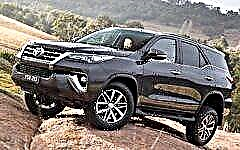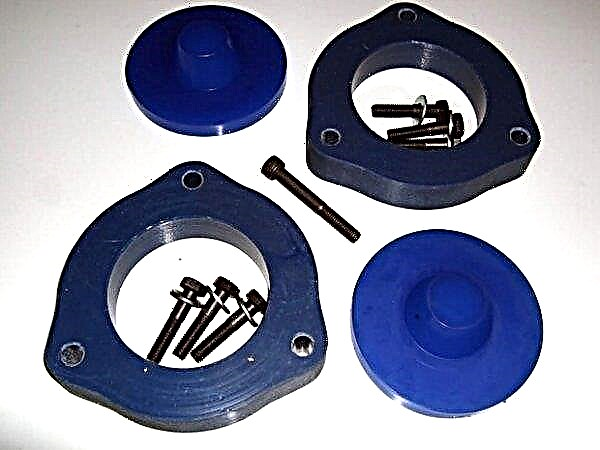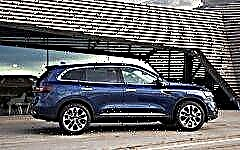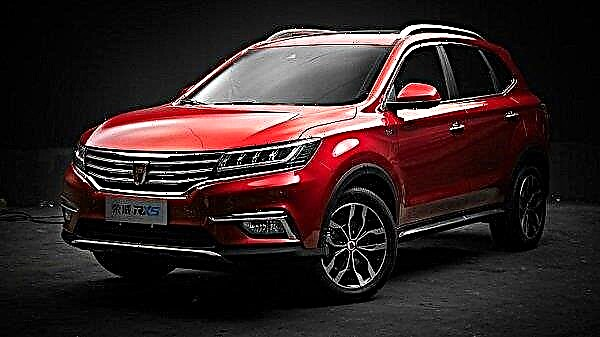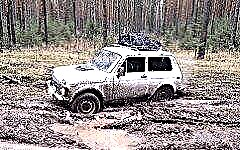

The content of the article:
- General characteristics
- Important points of choice
- Variations of models widely available in the aftermarket
- Domestic production models
An SUV in our country is by no means a whim, but a real necessity. But in dealership car dealerships, new cars of this class are often too expensive, and motorists pay attention to the secondary market, where you can buy a used car.
How to buy an SUV on the secondary market to save money and not make mistakes? It is important to understand that cars of this class are used mainly off-road, hence the main accents of the choice follow.
General characteristics
Real cars, capable of overcoming off-road, have a number of distinctive features. Regardless of whether you choose a car in the primary or secondary market, initially it makes sense to decide, what characteristics of the car will be "reference" for you:
- type of body - load-bearing or frame (frame SUVs are more durable, better cope with off-road conditions, are easier to repair, but a car with a monocoque body is easier to drive);
- long trips or the need for regular transportation of bulky goods require a roomy trunk;
- independent rear and front suspensions provide better grip on the road;
- the cross-country ability of the car increases the function of blocking inter-wheel differentials;
- it is better to choose a gearbox of a mechanical type - it is more reliable, it copes better with slipping, it will withstand water flooding and, unlike an automatic gearbox, is subject to repair;
- downshift transmission is an important characteristic for cars of this class;
- diesel or gasoline is a controversial issue, since a gasoline car is more powerful, faster, its repair is cheaper, but diesel cars have less fuel consumption;
- off-road drum brakes have proven themselves better than disc brakes.
After you decide on the main characteristics that your future SUV should have, you should pay attention to the state of the components and assemblies of the particular model selected. It is important to understand that this class of cars is used on off-road and rough terrain, and make long trips.
Hence - and the list of problems arising over time, characteristic "weak points", which must first of all pay attention to when choosing a car in the secondary market.
Important points of choice
Car body

If the SUV has rotten sills, this is not your option: most likely, the car is already falling apart.
Naturally, there will be some damage to the car body, but it is better that they are not critical. If you see chips, dents, traces of rust on the body of an SUV, it is better to refuse to buy such a car and look for another one.
Where rust has appeared, the body will inevitably begin to rot, and dents can hide the curvature of the side members, which impair the vehicle's handling.
A good option would be a car, the body of which is treated with a special anti-gravel coating, which saves the body from minor damage. Also, the installed power bumper will be useful.
If a car with a perfectly flat and smooth body is offered in the secondary market, most likely this is also a catch: it is likely that the car was recently re-painted. As a rule, they do this if they seek to hide significant damage.
The uniformity of the paint layer can be checked by running a magnet wrapped in cloth along the body: where there are many layers of paint, the magnet will be less attracted.
The presence of traces of non-factory welding is best seen in the area of small parts - trunk racks, hood. If they are present, most likely, the car got into serious trouble, and its further operation can become a problem.
Mileage

Estimating the mileage of an SUV is not an easy task. Odometer readings are often twisted to provide a potential buyer with incorrect information about the wear of technical units and components of the car.
But the real mileage of the car can be estimated by paying attention to the following points:
- Upholstery inside the SUV. If the upholstery is made of fabric, then it usually wears out after 100 thousand kilometers. Leather upholstery can withstand 200 thousand km. Also, the worn armrest at the driver's seat testifies to the high mileage.
- The state of the steering wheel. After the first 200 thousand km, characteristic signs of abrasion appear on the steering wheel. If the steering wheel looks completely new, this is also a reason to think about whether it has been changed.
- Pedal condition. If the pedals are worn down to the metal layer, it means that this SUV has passed more than 200 thousand. If the pedals look brand new, then, similar to the case with the steering wheel, a replacement was made.
It will not be possible to adequately assess the mileage of an SUV "by eye", because if a car drives exclusively off-road, it does not cover more than 11-12 thousand km per year, and when used within the city and for travel, its mileage can be two or three times more.
The only way to establish the truth is to use the services of computer diagnostics.
Detailed technical check

To assess in detail the technical condition of all important units and parts of a used SUV is not an easy task even for a car mechanic, if he does not have much experience with such equipment.
Therefore, you should think about ordering a car check - at a car service or on-site, as you will be able to agree with the seller. There is no reason for an honest seller to refuse such verification.
Experts will handle this task and possibly save you money by identifying a hidden problem or vehicle malfunction.
Car history

In the photo: the interface of the Autocode service
SUVs are generally very hardy vehicles. But for this very reason they often fall into the hands of those who like to drive with adrenaline, get into accidents and then into an endless cycle of resale.
In order to find out the history of a car, you can punch its license plate using the Autocode service: you will find out about the presence or absence of registered accidents involving the car, find out if there are any traffic police restrictions, what is the estimated amount of repair work according to the insurance company.
If the car has been in an accident, especially in a head-on collision, it is imperative to check the body geometry.
What questions should you ask the seller

Reason for selling the car
Naturally, there is no guarantee that this question will be answered honestly. Nevertheless, it is still worth asking. Perhaps the seller could not afford the maintenance of the car, or he began to repair it too often.
But it may be that the car owner just looked after a newer model car for himself; then the sale is quite "harmless", and it makes sense to take a closer look at this SUV.
Service book availability
A responsible car owner, as a rule, has a special service book - at least a simple notepad, where records are made about all repairs, scheduled maintenance and replacement of car components.
The first step is to ask the seller to get acquainted with such a book. If the seller does not have it, you may have encountered a reseller or a car owner who, by and large, did not care about the car. Better to look for another model.
Has the car been involved in a serious accident
An honest seller will answer this question thoroughly and comprehensively. It will immediately become clear on the basis of which the price of the car is formed.If the seller is dark, this is an additional reason to drive the car for diagnostics and get a discount.
What kind of oil is used in the car, its replacement and consumption
If the oil is expensive enough, it means that the SUV was watched, if not, the engine may already have problems.
The frequency of oil changes is also important: if it was done on time, every 10 thousand kilometers or once a year, then the car will stay better.
If a car with an increased appetite "eats" oil (over 7 liters per 10 thousand km), this is a reason to conduct a more thorough engine diagnostics and bargain with the seller, insisting on an additional discount.
Scheduled car maintenance
Another important question. If the car did not undergo scheduled maintenance or was serviced by car mechanics not from the dealership, this may be a reason for refusing to purchase.
If even at the time of sale the car looks quite adequate, the copy, on which planned maintenance was saved, will certainly present problems in the near future.
Questions about the condition of the engine, suspension, electricians
Even if you ask the seller questions about what does not work in the electrical part, whether the engine knocks, whether there is a knock on the suspension - be prepared for the fact that the answers may not be entirely honest. Therefore, it is better to check all these points with specialists.
Special attention should be paid to the condition of the suspension: for SUVs this is a problematic moment, since the load on the suspension in cars of this class is increased.
A few more subtleties

A used car in Japan, Korea or the USA is better than a used car in Russia. As a rule, in these countries, the car is properly serviced and does not drive it in thirty-degree frosts.
Too old cars are, as a rule, a technique squeezed out to the last drop. It will not last long.
If there is dirt or dust under the hood of the car, it is better to look for another model: an SUV will not live long with a clogged engine.
If a car has several owners registered, according to statistics, its condition will be worse than that of a car with one owner.
Variations of models widely available in the aftermarket

In the photo: Toyota RAV4
- Toyota RAV4. Sold in both diesel and gasoline versions. Great for urban and rural areas, but completely deaf off-road is best avoided.
- Nissan X-TRAIL. It perfectly tolerates Russian "roads-directions", is well equipped, equipped with powerful engines. This model is notable for its reliability and good condition even after 200 thousand. The first thing to check is the condition of the body and the engine.
- Honda CR-V. A car that, despite all-wheel drive and a wheel-locking system, is still better suited for city roads, albeit of poor quality. When buying on the secondary market, you should pay attention to the condition of the visco-clutch: it should be changed after the first 150 thousand km.
- Suzuki Grand Vitara. A very reliable model that can serve for quite a long time not only in urban, but also in rural conditions. An important point is the use of only high-quality fuel. Of the minuses, we can mention the insufficiently spacious luggage compartment.
- Hyundai Tuscon. A model widely represented in the aftermarket SUV market. The body part is strong, but there are problems with the paintwork. The weak point of the model is the suspension: after five years of operation, it begins to fail, knock.
Domestic production models

In the photo: Used Niva with an open hood
Oddly enough, in the secondary market with models of domestic production, things are very good: the reliability of Russian SUVs is quite satisfactory.
Moreover, the Russian "Niva", "Shniva", "Hunter" and "Patriot" are focused on the true off-road and do an excellent job with it.
Simpler design compared to imported models, simplifies maintenance. At the same time, it should be understood that there can be no talk of any increased level of comfort: the Russian SUV is a simple and harsh technique. The cost of Russian models in the secondary market is lower than that of similar models of foreign cars.
Conclusion
Ultimately, the choice of an SUV model in the aftermarket is solely the buyer's decision. It is important to take into account how the vehicle has been used up and in what conditions it is planned to operate it after purchase.

